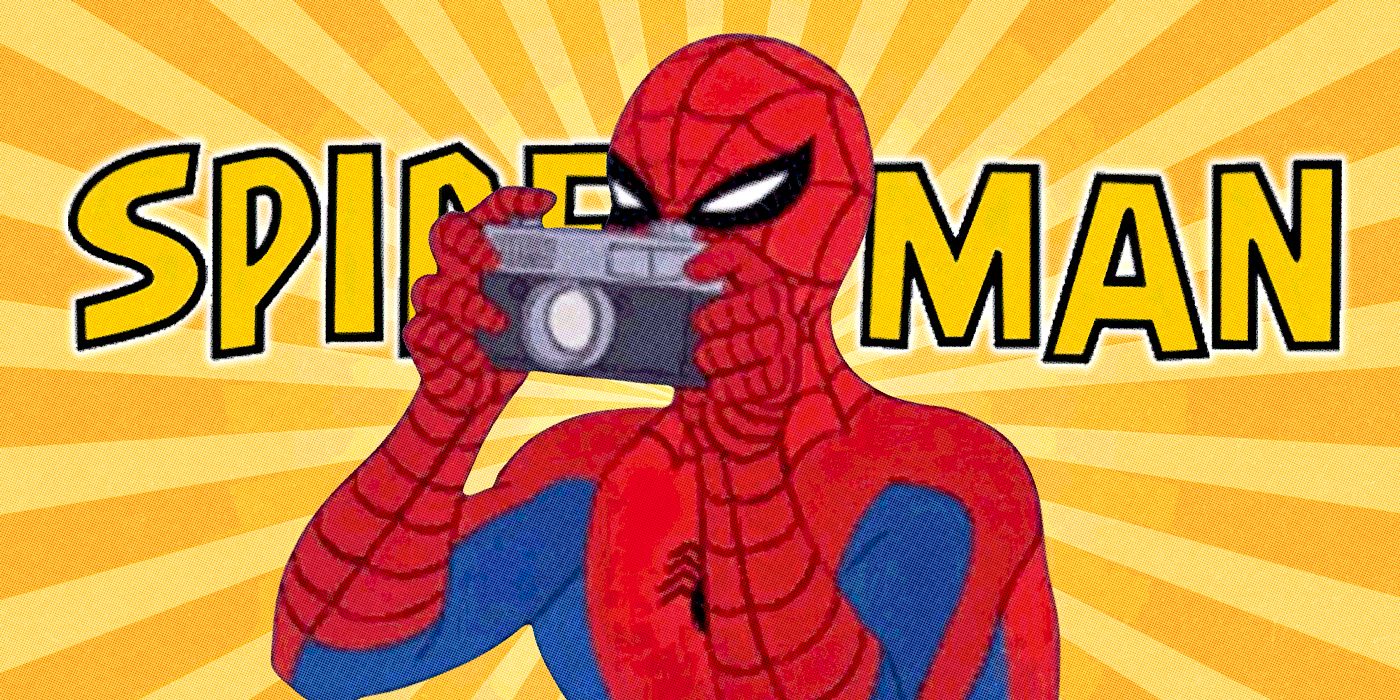The Big Picture
Spider-Man, the animated TV show from the 1960s, offers a unique and unconventional take on the beloved character. It has a hint of psychedelia and groovy music that sets it apart. The first season of the show stays true to the classic Spider-Man storyline and features iconic villains from the comics. Despite its limited animation and simplistic visuals, Spider-Man has its own aesthetic appeal. It captures the essence of the early comics with its entertaining characters and a jazz and funk-infused soundtrack.
Spider-Man has been adapted to various mediums since his debut in Amazing Fantasy #15. However, none of the adaptations strike the perfect balance between conventional and strange quite like the 1960s animated TV show. Premiering in 1967, the show began with familiar villains and storylines. But as it evolved, it embraced the changing times with psychedelic elements, catchy music, and sci-fi plots that were reminiscent of pulp novels rather than traditional Marvel comics. Spider-Man is undeniably bizarre, making it a must-watch for fans looking for a fresh take on the character.
In 1967, Spider-Man had become one of the most popular superheroes worldwide. While he initially existed solely within the pages of comic books, his growing popularity in pop culture meant there were opportunities for expansion. Given the limitations of the 1960s, a movie adaptation was unlikely. However, animation provided the perfect opportunity to bring Spider-Man to life on screen. Thus, the world was gifted with the 1967 Spider-Man cartoon.
‘Spider-Man’ Began as a Faithful but Imperfect Adaptation
The first season of Spider-Man, voiced by Paul Soles, started off with a familiar portrayal of the web-slinger. It introduced the beloved rogues’ gallery, including the Green Goblin, Doc Ock, the Lizard, and Mysterio. The supporting characters, such as Aunt May, Mary Jane Watson, and J. Jonah Jameson, also made appearances. The show’s opening song, “Spider-Man, Spider-Man, does whatever a spider can,” remains one of the most iconic superhero themes.
The first season of Spider-Man follows a formulaic approach to 60s animated kids’ shows. It faithfully brings the Stan Lee and Steve Ditko run to life, without offering any remarkable innovation. Despite its cheap animation, the show’s charm lies in its ability to capture the essence of the early Spider-Man comics. It may not have the finest visuals, but it appeals aesthetically to fans. Additionally, the jazz and funk-infused soundtrack adds to its overall appeal.
The show’s creators embraced various visual elements beyond character animation. Spider-Man features amusing transitions between scenes and dynamic shots that start normally before spiraling into chaos, resembling a “breaking news” newspaper flying at the screen. The characters themselves may lack movement, but the show compensates with numerous montages of Spider-Man swinging across the city. The delightful sound effects accompanying his web-swinging adventures bring a sense of simplicity and joy. Watching Spider-Man feels like quenching thirst with a glass of water after years of consuming soda—it’s refreshingly straightforward.
Fun Characters, like J. Jonah Jameson, Anchor the Show
The characters in Spider-Man resonate with their comic book counterparts. Each character, whether friend or foe, is perfectly characterized. However, the show exaggerates their personalities to the extreme. Their expressions and mannerisms are hilariously over-the-top. The way characters talk and think is akin to a friend who just had their wisdom teeth removed and is on pain medication—unhinged and unpredictable. Spider-Man/Peter Parker’s voice, portrayed by Paul Soles, defies any indication of trouble in New York City. Despite not sounding like a teenager, Soles delivers an outstanding performance. His voice alone is enough to captivate viewers.
Take the episode “Menace from the Bottom of the World” as an example. A quirky situation unfolds when a bank inexplicably sinks into the Earth’s core. Spider-Man ventures inside, only to encounter prehistoric flying creatures. In the face of danger, Spider-Man cracks jokes with the nonchalance of a geek, saying, “Boy, I hope they’re on their way south for the winter.” Even with monsters lurking, Spider-Man maintains a lighthearted demeanor. J. Jonah Jameson, renowned for his loud and angry disposition, finds his place in the show. He is constantly fired up and serves as the second lead character. Jameson sends Peter Parker on absurd and challenging assignments, only for them to conveniently lead him to Spider-Man’s next destination. Despite his flaws, Jameson plays an instrumental role in the show’s progression.
Ralph Bakshi Brings His Unique Flavor to ‘Spider-Man’
If the first season didn’t leave you fully satisfied, fear not. Ralph Bakshi, the renowned animation legend, took over as the producer for the show’s second and third seasons. This is where things take a peculiar turn, as Bakshi and his team injected odd sci-fi concepts, trippy visuals, and a more serious tone into the series. While the show retains its playful nature, it ventures into unfamiliar territory. For those familiar with Bakshi’s works from the 1970s onwards, this comes as no surprise.
In terms of pure enjoyment, one could argue that the 1967 Spider-Man series, which concluded in 1970 after three seasons, offers the most fun-filled experience featuring the character. Unintentionally hilarious performances, inventive episode ideas, peculiar sci-fi adventures, and a soundtrack ranging from funk to big band make Spider-Man a visually captivating and surreal journey. It’s a trip that will undoubtedly leave you captivated
Denial of responsibility! TechCodex is an automatic aggregator of the all world’s media. In each content, the hyperlink to the primary source is specified. All trademarks belong to their rightful owners, and all materials to their authors. For any complaint, please reach us at – [email protected]. We will take necessary action within 24 hours.
Khushi Patel is a science fiction author who lives in Austin, Texas. She has published three novels, and her work has been praised for its originality and imagination. Khushi is a graduate of Rice University, and she has worked as a software engineer. She is a member of the Science Fiction Writers of America, and her books have been nominated for several awards.


